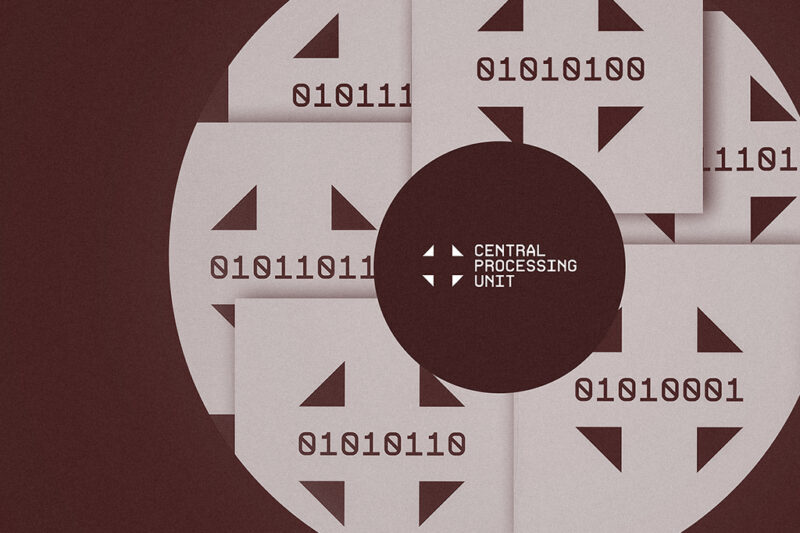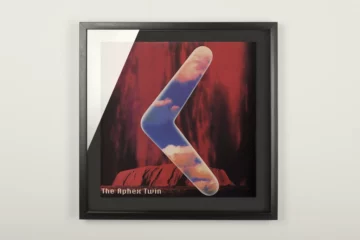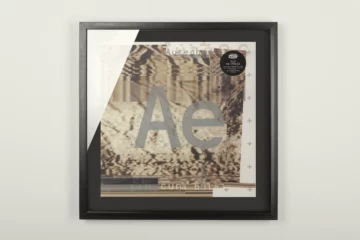»I’m an optimist when it comes to technology and that does reflect on CPU«, Smith remarks during the interview. The founder of Central Processing Unit (CPU) seems impacted by Brexit and the pandemic, by overheated pressing plants that suffocate on major reissues of badly aged classic rock slush, picking apart release schedules across the board. »I try not to let the current political climate and trends consciously influence releases but I think it does permeate through the artists. I try to keep CPU in a neutral space. I like the idea of having something you can rely on and escape to.« When he was trawling through crates in Sheffield during the early 90s, Smith among many others knew to appreciate this reliability as well. As soon as a violet sleeve appeared between eurohouse singles and ambient tomes, experts dared to pick it blindly, without pre-listening. The iconic designs by Warp Records meant a safe bank for bleep, braindance as well as everything British named something with »acid« – and were quite a novelty in that. Anybody snatching a warp piece at the time knew what to expect, without being disappointed. Central Processing Unit knew how to translate that PR move onto the next level. With the help of designer Nick Bax, himself being a former member of The Designer’s Republic who invented the whole visual image of Warp Records and later founded the Sheffield design studio Human, Smith developed a concept based on minimalism and numerology – black and white, without artworks, only zeros and ones sequenced in binary fashion, one byte of countdown. »So after 256 releases we would come to an end«, Smith remarked in an interview with Groove years ago. »In regards to the 256 limit, the one idea we always talk about is to just start again at 00000000. How that would look I’m not sure. I’d probably take a break for a while though.« In any case, considering current release rates, there is still enough in the label pipeline for the coming ten years.
Central Processing Unit and Human in professional symbiosis seems to be a fitting allegory for the label’s sound, which keeps fusing the mechanical and the humane in ever evolving patterns. Most names in the back catalog use analogue synthesizers, packed euroracks and drum computers like the TR-808 for excavating a fresh sound with old gear – again having a conscious limitation within your tonal repertoire seems to be generating new ideas. »There are so many fantastic influences to draw from in electronic music, and using old gear forces you to work in a certain way which can be very inspirational, in the right hands it leads to some really fresh music with that old school feel. Also I’m a sucker for nostalgia and love to hear artists acknowledging their roots.«
»There are so many fantastic influences to draw from in electronic music, and using old gear forces you to work in a certain way which can be very inspirational, in the right hands it leads to some really fresh music with that old school feel.«
Chris Smith
A shortage of such artists is not in sight, considering CPU is still compiling a series of alien releases between electro, sci-fi ambient, legit Detroit vibes and intelligent dance music ten years after its inception. On one hand produced as if based on mathematical principles, on the other emotionally tinged with strangely modern memories branching out into the haze of time. Those who browse the label catalog encounter a consistent aesthetic combined with a consequent curation, combining old genre pioneers like B12, Carl Finlow (as Silicon Scally) or DMX Krew with fresh innovators such as Biochip (not to be confused with Biochip C.), Cygnus, Mikron or Nullptr. Over the years outstanding works with the thorough charm of underground classics emerged: the ominous »Co Intel PRO« by S>>D, which could easily work as an alternative OST to »Goldeneye 64«, the thick and exquisitely textured cryosleep music »Three Dimensions« by Plant43 or a sudden stroke of chiptune genius, banned on 3,5” floppy disk, called »Floptrik« and made by swedish commodore afficionado Goto80 are just a few examples.
CPUs repertoire and style grew organically, in part due to Smiths passion for video games in the tradition of »Wipeout«, but also echoing his youth in 90s Sheffield and the connections resulting out of that. »I still get a lot of recommendations from artists on the label which helps uncover incredible talent. I get the occasional demo in my inbox that is outstanding and I try to reserve spaces for new artists every year«, Smith notes. »The aesthetic remains the same, perhaps with more clarity as the label’s reputation and prominence grows.« Which is the case for many years now across genres and borders, since CPU is hailed all over Europe for its continuity in releasing high quality material considering style and execution. It is music for coding, for a lonesome ride over autobahn A4 at night, passing luminescent industry parks. For those who want to delve even deeper into it: dig up some old Strugatzky novellas, roll a blunt and dwell in nostalgia while the future is approaching.









